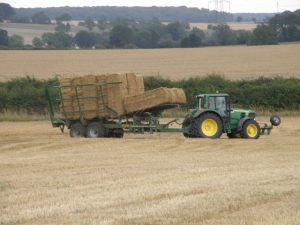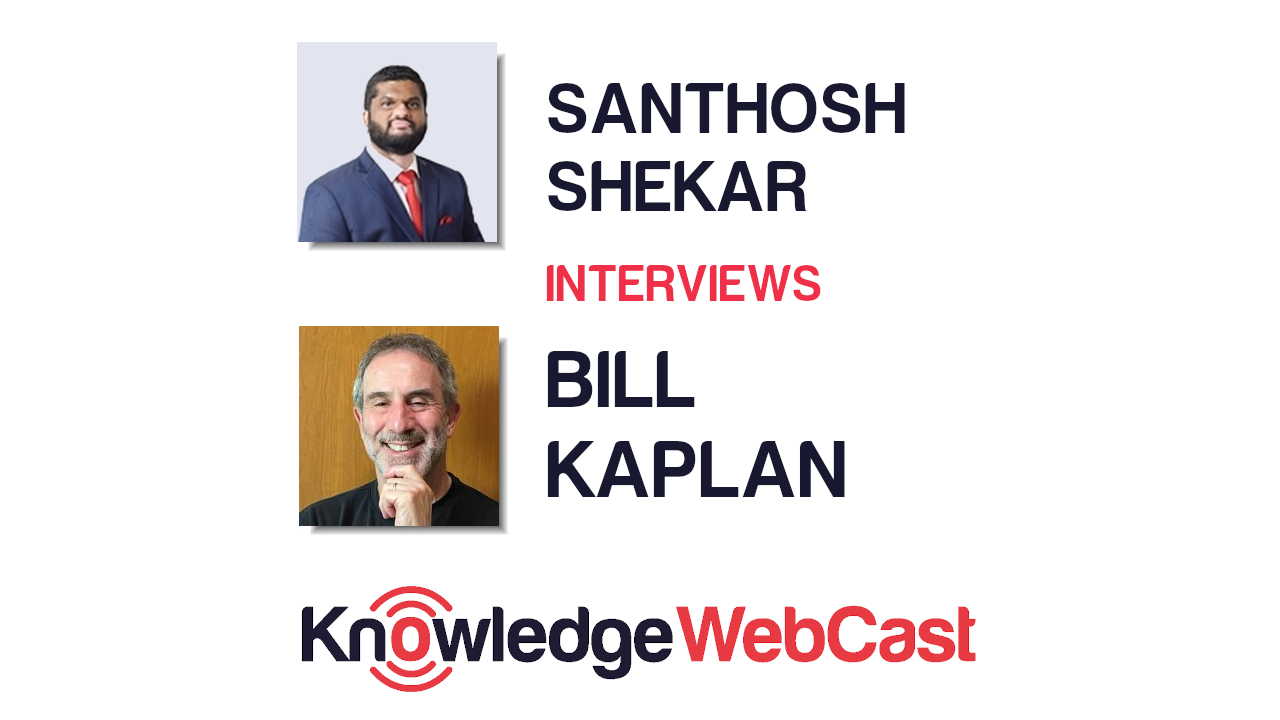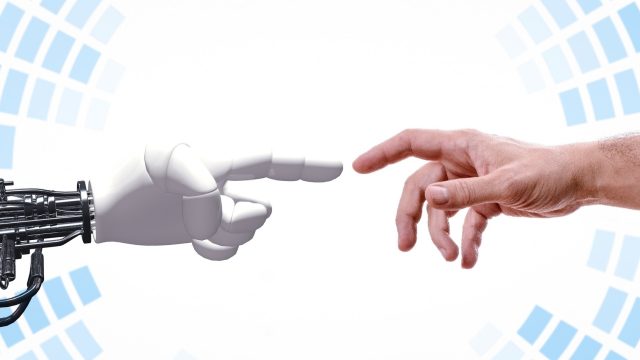
The difference and danger of information versus knowledge management – a cautionary tale
Let me tell you a quick story. Recently at my uncle’s funeral I had a fascinating conversation with an old farmer who’s son was following in his footsteps on a property up near the Murray River.
He was talking about all the technology now used in farming, like scientific assessment of water tables and salinity, satellite and drone based land surveys, computer controlled water allocation and measurement leading to fantastic efficiency, as well as crop and nitrate selection algorithms to ensure maximum harvest and cattle health. These are all the benefits of the technology world we find ourselves in, and around the corner, artificial intelligence (AI) is going to take another step forward in terms of predicting larger agricultural and business problems before they occur so farmers can reduce the chance of loss due to bad weather, lack of water or over investment in certain income streams.
But after waxing lyrical about all the new innovations in farming, he laughed how his son had just lost nearly $200,000 worth of hay sheds in 5 fires over a two week period. It turns out that the young farmer had not dried the hay sufficiently before bailing it and the residual moisture, when stacked in large sheds had caused spontaneous combustion and the lost of considerable stock and assets. But how did this happen? Surely this knowledge is 101 for somebody working on the land?
Knowledge lost
Not many people outside knowledge management (KM) are aware that for nearly 1400 years, the recipe for making cement (Roman cement) was lost. In fact we still haven’t found it. The reinvention of Portland cement has led to our modern construction industry, but Roman cement lasts 2,000 years (so far) yet our “Portland” cement is lucky to last 200. So what happened? How can this be? How can such foundational knowledge be lost to the entire human race? Well, whatever the reason, if we can forget how to make cement, then we can definitely forget less important skills and techniques and that is what happened to this farmers son, but before we start pointing fingers, lets consider the technological change over the past 30 years and especially one important aspect of those changes that effects all of us in whatever industry we are working in.
I am sure when I say “hay bales” to you, unless you are a farmer, you will probably have a picture in your mind of the small rectangle bales that you can still buy at the pet store to feed your rabbit. About 3 feet long, you can easily carry one on your knee by holding the two pieces of baling twine that hold it together. These were the bales that I grew up with as a child on a dairy farm and making them involved cutting the long summer grass, turning it with a tractorised rake several times over 3-4 days so it properly dried before baling and storage in hay sheds. I have done this many times. I remember the large gatherings of people and trucks to cart in the hay from the paddocks followed by lots of shared food afterwards. I learned every part of this process, sitting for hours on the tractor either mowing or raking, but there was one bit that was always a mystery to me. “When was the hay dry enough to bale.” This was determined by the weather and the amount of moisture in the grass before it was cut and I know WHAT I had to do, I even knew HOW to rake the hay, but knowing WHEN? My father would pick it up, bend it, feel it, listen to it and once I even saw him bite some before he would pronounce “OK, it’s ready. We bale it tomorrow”. This drying was critical due to the chance of fire mentioned above, and I have seen two sheds burn down over the years including one of my uncles who, from memory, had hurried a baling to avoid the coming rains.

Last week I had the chance to ask my dad how he first learned to do this given all the variables involved and the high cost of getting it wrong. He said he had been taught it by an old farmer and a lot of it was based on the feel and sound as the hay is twisted. I asked him to describe what “ready” hay was like and he said “well it kinda just feels dry, you know?” This is a common reply from masters. They can no more describe the tacit knowledge involved in this complex task than you can describe how you actually manage to maintain balance while riding a bike. You just have to do it to know how and more importantly you have to know the importance of doing it so you take the time to get it right.
So what happened to our young farmer? Did his dad not pass on this knowledge? Well the answer is no, but the reason he didn’t is what holds the great lesson in this for all of us. You see about 25 years ago a new invention came out. The round bale. I am sure you have seen them standing about 6-7 feet in diameter in the middle of fields. Sometimes they are covered in blue plastic or placed in long rows along a fence. They are far easier and more efficient to transport and distribute to cattle. They don’t need sheds and can be left in the paddocks, and importantly for this tale, they don’t need to wait for several days of drying because they usually don’t get stacked where the overheating problem arises. Apparently the knowledge of drying hay was now obsolete and didn’t need to be passed on. I am sure your organisation has many areas like this where a procedures (or the reasoning behind them) are not passed on or kept current because the processes have changed? In fact some information managers, lawyers and even knowledge managers will tell you that the forgetting is both efficient and crucial for protecting the company legally, saving computer storage space and allowing unlearning to occur in the evolutionary process. All this is true, but is there a down side, and what is the cost of this lost “Why” knowledge?

OK, so fast forward 20 years and a brand new technology comes out. Rectangle bales! Only these ones are the size of a VW Beetle. They have all the advantages of a round bale PLUS the stacking ability of the old rectangle bales. What could possibly go wrong? Well if you are following the story, you have probably already guessed. For all the information, and databases, and software, and research, and instruction manuals available to him, our young farmer had lost the ability to know exactly when his hay was dry enough to bale, and the resulting financial loss of both a season’s hay, and the huge sheds that hold it were considerable; not to mention the impact on stock this coming winter when either silage will be short or hay will have to be purchased and trucked in. Not cheap.
Would you give your teenage son the keys to your Ferrari?
There is no doubt the growing power of digital technologies to both automate, provide insights and consider correlations of large datasets from multiple sources is leading to levels of business efficiency never heard of before. In my own work, a recent project in one division saw a 208% increase in throughput, while reducing workload by 70% and reducing time-to proficiency for new staff from nearly 10 weeks down to just 8 days. In my fathers time, these sort of gains would have been unheard of, especially in just a 3 month period.
However…
Implementing advanced digitisation and automation strategies in your company without co-developing the knowledge and expertise to manage them, is akin to handing your teenage son the keys to your beloved Ferrari. Not only will all that amazing technology fail to make him safer on the road, the levels of power involved will dramatically increase the risk of catastrophic failure and considerable financial loss.
Don’t make the same mistake as this young farmer. If you have implemented IT projects that don’t deliver on results, new software that fixes one problem and causes three new ones, or high staff turnover in the complicated operational areas of your business, then may I suggest that throwing more money and technology at the problem is not going to fix it. Whether you are running a single automation project, or digitising your entire business, please, just talk to a knowledge management professional today and get your foundations laid right. You won’t regret it.
Article source: The Difference and Danger of Information versus Knowledge Management – a cautionary tale was originally published on the Delta Knowledge blog.
Stuart French is one of the very first Silver Patrons of RealKM Magazine.
Header image source: Image 1366722 is in the Public Domain.






